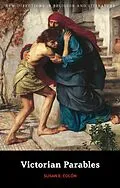The familiar stories of the good Samaritan, the prodigal son, and Lazarus and the rich man were part of the cultural currency in the nineteenth century, and Victorian authors drew upon the figures and plots of biblical parables for a variety of authoritative, interpretive, and subversive effects. However, scholars of parables in literature have often overlooked the 19th-century novel, assuming that realism bears no relation to the subversive, iconoclastic genre of parable. In this book Susan E. Colòn shows that authors such as Charles Dickens, Margaret Oliphant, and Charlotte Yonge appreciated the power of parables to deliver an ethical charge that was as unexpected as it was disruptive to conventional moral ideas. Against the common assumption that the genres of realism and parable are polar opposites, this study explores how Victorian novels, despite their length, verisimilitude, and multi-plot complexity, can become parables in ways that imitate, interpret, and challenge their biblical sources.
Autorentext
Susan E. Colón is Associate Professor of Literature in the Honors College at Baylor University in Waco, Texas, USA. She is the author of The Professional Ideal in the Victorian Novel: The Works of Trollope, Disraeli, George Eliot, and Gaskell (Palgrave, 2007).
Inhalt
Preface \ 1. Parable as Literature, Literature as Parable \ 2. The Extraordinary in the Ordinary: Parable and Realism \ 3. "The Parable of Actual Life": Charlotte Yonge's The Heir of Redclyffe \ 4. Prodigal Sons in the Fiction of Margaret Oliphant \ 5. "The Agent of a Superior": Stewardship Parables in Our Mutual Friend \ Afterword \ Notes\ Bibliography \ Index
